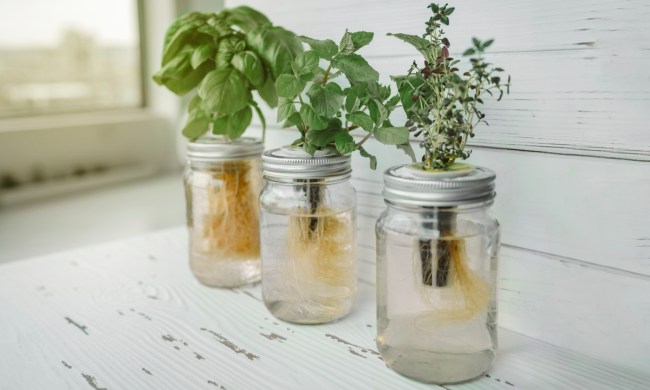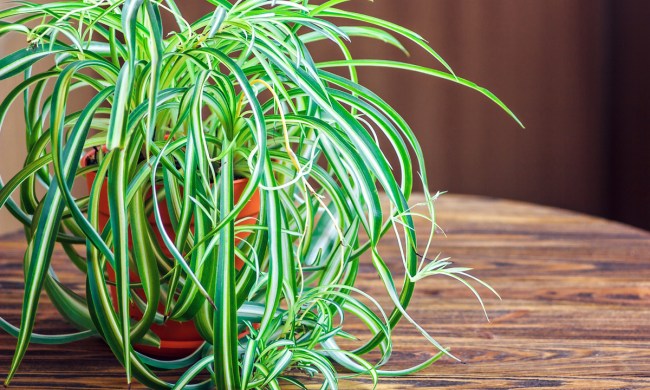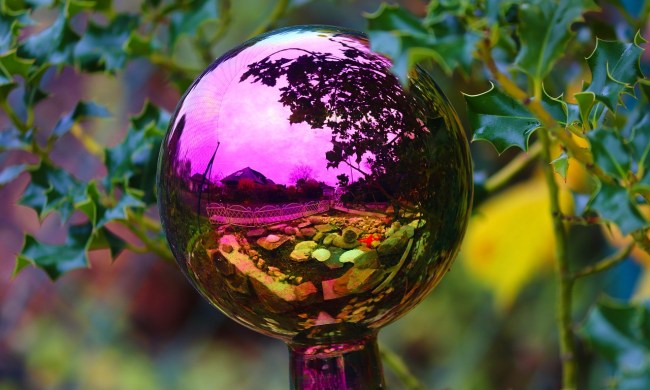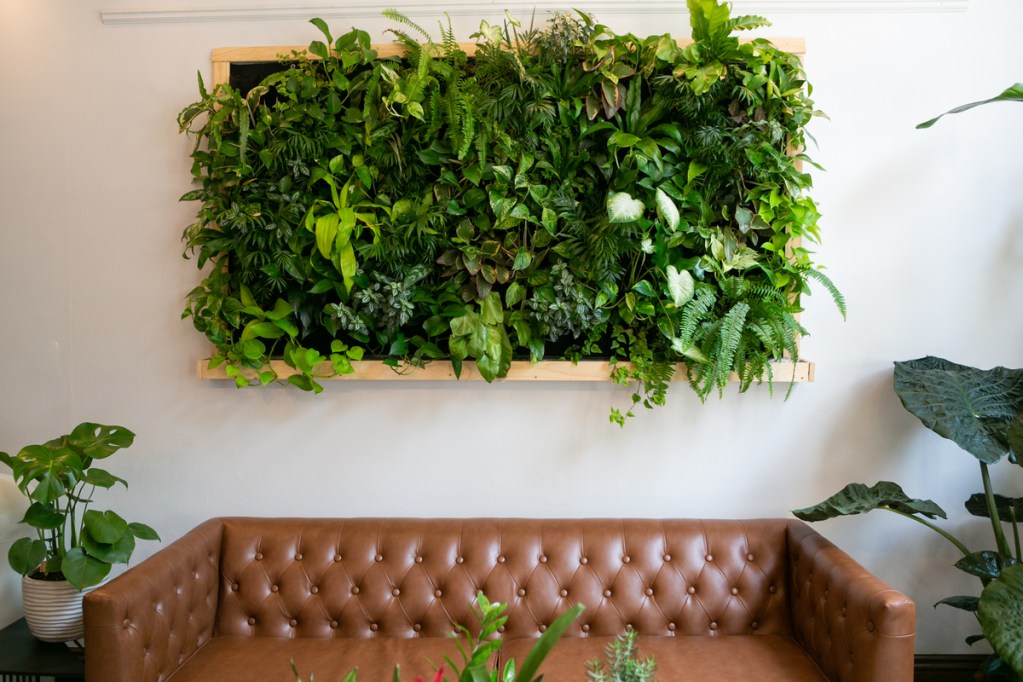
If your home could use some extra greenery, but doesn’t have much space to spare, then a DIY plant wall might be just the thing you need. Plant walls come in a lot of sizes and designs, and building one yourself lets you create it to fit your individual space. They’re perfect for sprucing up that wall in your living that you just don’t know what to do with or for creating a privacy screen between you and your neighbors.
If you’re in the business of small deck gardening, vertical plant walls and setups can grow just about anything, from herbs and flowers to fruits and vegetables! Want to get started building your own DIY plant wall? Here are our recommendations for you!
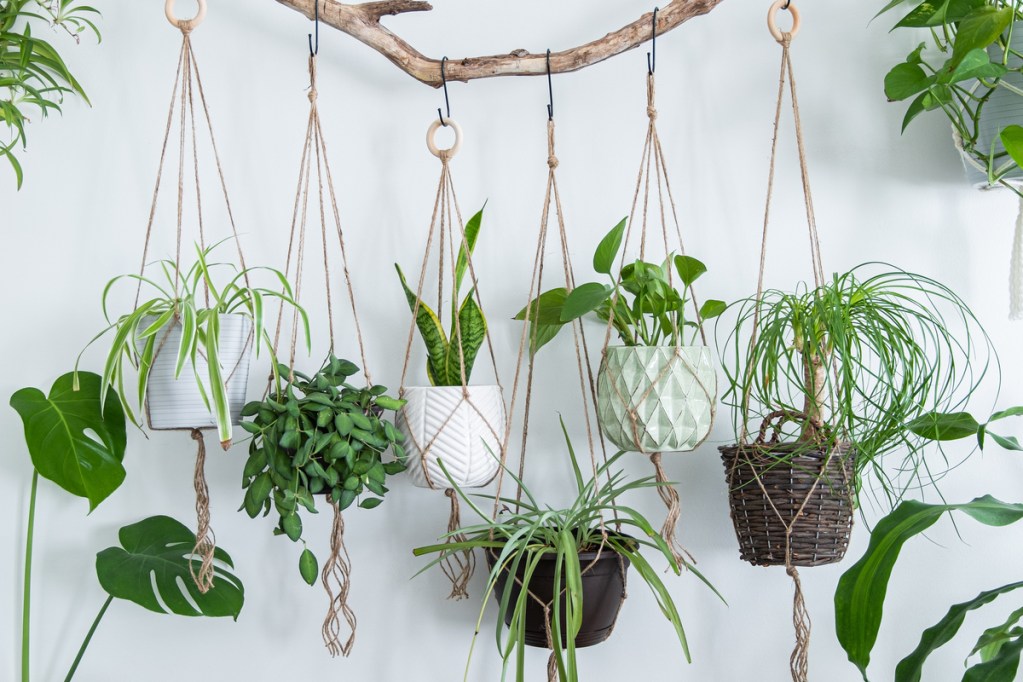
What’s a plant wall? Why should you build one?
Plant walls are exactly what they sound like, though they don’t all look the same. They can be as small as a frame filled with plants that’s hung on the wall, as simple as a trellis leaned in a corner for vines to grow up, or as complex as repurposing wood pallets for pots to hang off of. Plant walls are great for accent spaces in a living room or as a vertical herb garden near the kitchen. They can accommodate a variety of plants from houseplants to vines to succulents to flowers, and the best part is that every DIY plant wall is unique to the person who makes it.
A DIY plant wall can often be inexpensive, especially if you have some extra materials lying around the house. But why should you build one? Well… why not? They’re beautiful talking points inside the home, save space so you don’t clutter your floors or windows or tables with lots of pots, and can spruce up an outdoor location with ease. (When you build an outdoor plant wall, just make sure that the plants you pick will survive in your growing zone and climate. It’s always best to get your plants from a local nursery.)
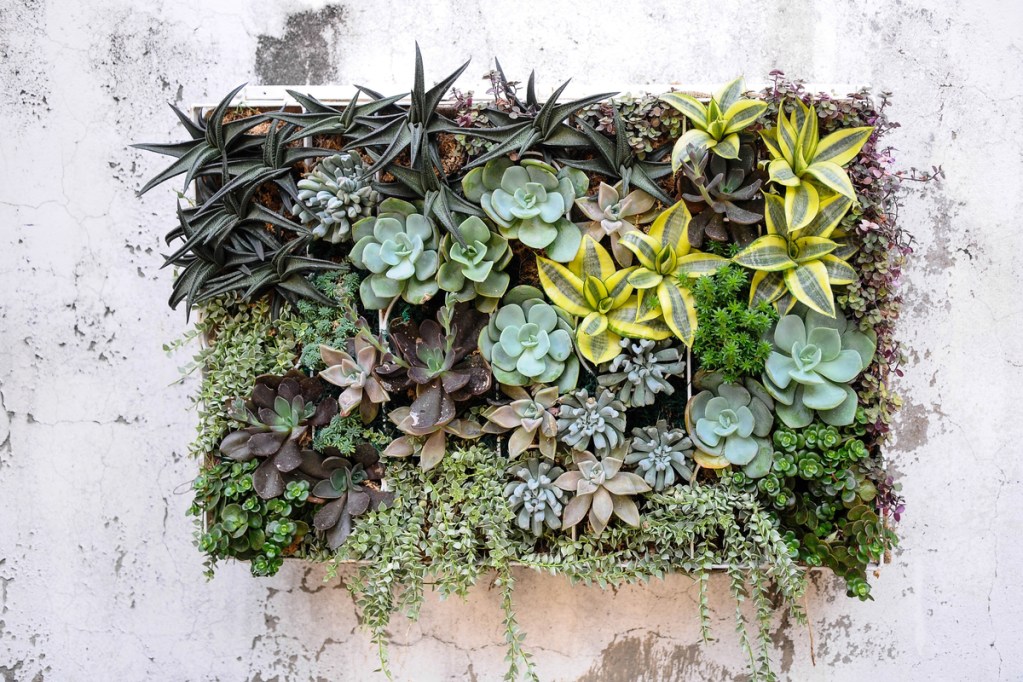
Ideas to get you started
It’s time to take your wall planters up a notch. Sure, the standard ceramic ones can be cute and add a lot to the look and feel of a room. But if you’re looking for something a bit more unique, DIY projects are the way to go. From turning your fence into a tin can garden to building a leather and wood trellis on your wall, DIY plant wall options have something for everyone.
DIY modern living plant wall
This DIY plant wall focuses on creating a space (either indoor or outdoor) where planters can hang. By using slabs of wood that you’ll cut, sand, and stain yourself, you’ll give part of your wall a slotted appearance. This specific DIY guide uses kitchen storage containers from IKEA that you can paint any color you want; however, as long as the planter or container you use has some kind of latch or a spot for a hook that you can attach to your wall you can choose almost any wall planter you like.
This modern plant wall will take a bit more time and expertise than other DIY projects, as you’ll need to use tools like power saws, drills, sanders, and clamps to put it all together. Some tools can be avoided: You don’t need to cut the wood to length if you buy pieces that are already as long as you need. If you’re planning to hang this wall inside, you won’t need clamps or glue either, as that’s primarily for adhering the wall to an outdoor location.
Take a look at The Garden Glove’s step-by-step guide here and see how you can adapt it to make it your own!
Difficulty level of project: Moderate, experience with woodworking is a plus
Time to complete: About a week
DIY bamboo trellis (for indoor or outdoor use!)
One of the biggest trends in indoor gardening right now is the use of a trellis to create a unique plant wall. If you’re in an apartment or other temporary space where you can’t make somewhat permanent changes to the wall, this is a great way to add a unique touch to your houseplant collection while giving your vine plants something new to grow on!
A DIY bamboo trellis can be leaned against the wall or placed into a larger pot. Best of all, you can make it as small or as big as you want. This is a nice option if you have pothos plants or mini monsteras (rhaphidophora tetrasperma) that you want to have a little more vertical space. All you have to do is cut some bamboo pieces to a desired length, tie them together, and place it where you want it! If you plan to lean it against a wall instead of putting it in a pot, make sure you find a safe way to temporarily attach it so that it doesn’t tip over.
Check out Fine Gardening’s tutorial and latching techniques.
Difficulty level of project: Easy
Time to complete: 2 hours once you have all the materials
DIY succulent wall garden
Vertical succulent gardens are all the rage, especially if you love small plants but don’t have a lot of room for each individual pot or a bunch of different terrariums. Plant wall gardens like this chevron-inspired one are a great way to elevate your plants and bring the greenery in your home to a whole new level (pun intended).
While vertical succulent gardens have a unique look to them, they lack both drainage and a way to easily get water to the succulents. Because these frames are hung on the wall, you’ll want to make sure that when you water the vertical garden, you keep the soil moist but not soggy. This may take some practice, and you may find yourself having to remove some dead or dying plants from time to time. But you’ll get the hang of it! Laura Eubanks has some great advice on her YouTube channel for how to water succulent wall hangings.
Take a look at Jen Woodhouse’s full tutorial here.
Difficulty level of project: Moderate, depending on the complexity of the garden box you build
Time to complete: A couple of days
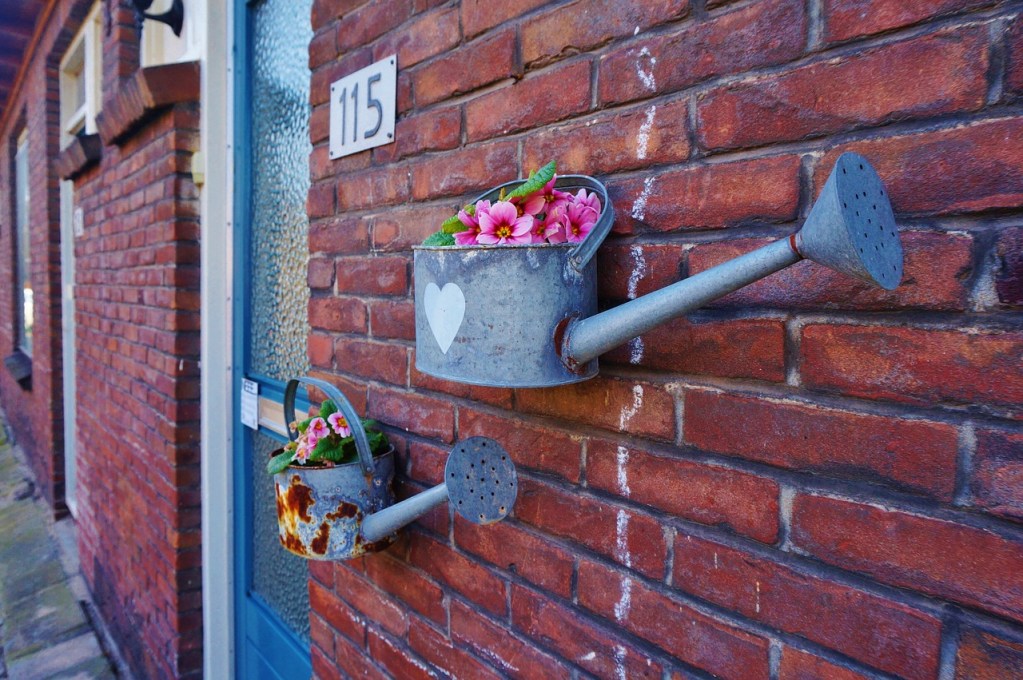
Mounting your DIY plant wall without drilling into the wall
Two of the easiest and most secure ways to mount anything are drilling into the wall to place a hook and nailing the object directly to the wall. However, this isn’t the right fit for every situation. If you want to hang a plant wall, but you aren’t able to drill or nail into the wall itself, then here are some possible solutions for you.
Adhesive hooks (sometimes also called peel and stick hooks) can be found in most home goods stores, and there are even heavy-duty options for heavier plants. To hang larger objects, such as a DIY plant wall, line multiple hooks up on your wall. Space them as evenly as possible along the length of your plant wall, and make sure they’re at the same height! Using multiple hooks keeps your plant wall hanging evenly and spreads the weight of it out, reducing the risk of it falling.
Magnets can also be useful for hanging your DIY plant wall. Adhesive magnets can also be found in home goods stores, and they’re relatively inexpensive. Small, metallic planters, such as repurposed old watering cans, can be hung easily with these methods, but even larger fixtures can be hung using magnets if you affix magnets to the fixture itself. Just makes sure the magnets on your DIY plant wall line up with the magnets on your wall!
One of the greatest things about DIY plant walls is that you don’t have to follow any of these tutorials exactly as they are. Maybe you want larger spaces between your slabs or you want to do a garden wall hanging that’s half succulents and half moss, divided right down the middle. These ideas can easily be used as springboards to find a plant wall that’s perfect for you.
